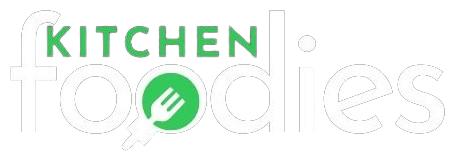Which Statement Describes A Nutritionally Balanced Diet? This implies that in order to maintain a healthy lifestyle, you need to consume different meals in the appropriate amounts. Fresh fruits and vegetables, as well as vital elements including carbohydrates, fats, proteins, vitamins, minerals, and lipids, are all part of a well-balanced and healthful diet.
To support a healthy and satisfying lifestyle, a balanced diet is necessary. Now let's explore the definition of a balanced diet, its advantages, and the nutrients you need to seek for.
Which Statement Describes A Nutritionally Balanced Diet?

Read Also: High Protein Vegan Meal Prep: A Nutritional Revolution
What is a Balanced Diet?
A balanced diet is a dietary strategy that gives your body all the necessary nutrients it needs to operate properly. It entails eating different meals in the appropriate amounts to keep one's health in check and avoid nutritional shortages. 30% of lipids, 12–20% of proteins, and 50–60% of carbs make up a balanced diet. For each organ and tissue to maintain optimal weight, the proper quantity of nutrients and calories are consumed.
Important Elements of a Well-Balanced Diet
Foods that together provide the body the necessary nutrients for optimum health and wellbeing are included in a balanced diet. The elements of a balanced diet are as follows:
Proteins: Sources of lean protein are essential for bodily function, muscular development, and repair. Lean beef or pig chops, fish, poultry, tofu, beans, lentils, and legumes are among the options.
Whole Grains: They provide a variety of minerals, fiber, and complex carbs. It has barley, brown rice, quinoa, oats, and whole wheat bread.
Achieving Dietary Balance: A Comprehensive Guide 2024
Understanding which statement describes a nutritionally balanced diet, balanced diet. Certain foods may work against your health objectives by causing vitamin shortages, weight gain, and chronic illnesses.
The following foods should be avoided:
Sugary Snacks: Sugary cereals, baked goods, and candy may cause blood sugar surges and weight gain. Don't overindulge in these confections.
Processed Meats: High amounts of saturated fats, salt, and preservatives have been linked to cancer and heart disease in bacon, sausages, and deli meats.
Sugary Drinks: Fruit juices, sodas, and sweetened drinks are high in calories and sugar, which may lead to obesity and tooth issues.
Fast food: The harmful fats, salt, and additives found in burgers, fries, and fried chicken from fast-food restaurants are common.
Must Read: Understanding The Sour Condiment NYT: What You Need To Know?
Understanding Nutritional Balance in Everyday Life
There is more to having a balanced diet than simply knowing what to eat. It also involves forming wholesome eating practices. The following useful advice can assist you in keeping a diet that is well-balanced:
1. Portion Control: Be mindful of the sizes of your portions. To prevent overindulging, use smaller dishes and engage in attentive eating to appreciate every taste.
2. Varied Choices: Incorporate a variety of fruits, vegetables, grains, and protein sources into your meals to broaden your dietary options. This guarantees a variety of nutrients.
3. Hydration: Throughout the day, drink plenty of water. Thirst may sometimes be confused with hunger. Remaining hydrated might aid in reducing mindless munching.
4. Eat Slowly: Eating slowly helps you avoid overindulging by giving your brain enough time to sense fullness. After each mouthful, put down your fork and savor your food.
5. Frequent Meals: Avoid skipping any meals, particularly morning. Eating on a regular schedule reduces unhealthy snacking and helps to normalize blood sugar levels.
6. Read Labels: Examine ingredient lists and food labels before making a purchase. Seek for items that are lower in sugar, salt, and additives.
7. Make a Plan: To prevent depending on convenience foods, prepare meals and snacks in advance. Making plans enables you to choose healthier options.
8. Mindful sweets: Enjoying sweets now and then is OK, but pay attention to how often and how much you eat them. Enjoy everything in moderation.
Final Notes
Which Statement Describes A Nutritionally Balanced Diet? By include nutrient-rich foods in your regular meals and making thoughtful food selections, you may enjoy the advantages of a balanced diet. It gives your body all the necessary nutrients it needs to function properly. You may be lacking in important vitamins and minerals if your diet is out of balance. In order to detect health problems early and lower your chance of developing chronic illnesses, you must also have routine complete body exams and vitamin screening tests.
You May Also Like: The Art of Dining: Virgin Voyages Menus Explained Guide 2024
FAQs: Which Statement Describes A Nutritionally Balanced Diet

What is a nutritionally balanced meal?
Frequently accepted that a plate that has equilibrium should include one half vegetables, one-quarter of carbs, and one quarter meat.
What is the role of nutrition in balanced diet?
You may get all the energy you need to be active through the day from a well-balanced diet. nutrients your body needs for development and repair, keeping you robust and healthy and reducing the risk of diet-related diseases.
What is the healthiest way to prepare food?
It is often possible to alter favorite recipes to make them lower in fat. As an alternative to deep-frying, consider steaming, baking, grilling, braising, boiling, or microwaving your meal. Make use of nonstick cookware. To preserve the nutrients in your veggies, steam or microwave them rather than boiling them.
What are the three main nutrients in a balanced diet?
The three primary categories of macronutrients in meals are proteins, lipids, and carbohydrates (nutrients that are needed daily in considerable amounts). They provide 100% of the diet calories and 90% of its dry mass








